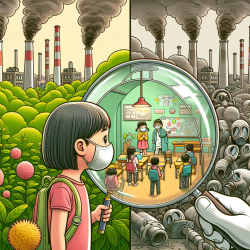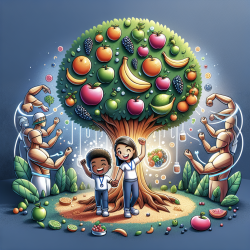Introduction
In recent years, the impact of environmental chemicals on children's development has become a focal point for public health and policy discussions. The research article "Chemicals in the Environment and Developmental Toxicity to Children: A Public Health and Policy Perspective" by Goldman and Koduru (2000) provides a comprehensive overview of this critical issue. For practitioners in the field of special education and child health, understanding these findings is essential for improving their skills and ensuring the well-being of children under their care.
Understanding the Research
The research highlights the presence of numerous pesticides and toxic chemicals in the environment that have not been thoroughly evaluated for their potential to cause developmental neurotoxicity. This is particularly concerning given the vulnerability of children to such exposures. The 1996 Food Quality Protection Act (FQPA) and the Safe Drinking Water Act have prompted the U.S. Environmental Protection Agency (EPA) to enhance its assessment of pesticide safety, especially concerning children's health.
Key legislative measures include:
- Incorporating an additional 10-fold safety factor in risk assessments for pesticide residues to account for children's sensitivities and incomplete data.
- Implementing the Endocrine Disruptor Screening and Testing Program to evaluate chemicals in food and water for endocrine disruption potential.
- Launching a voluntary chemical information program to provide screening-level data for approximately 2,800 high-volume chemicals in commerce.
Implications for Practitioners
Practitioners can enhance their skills by integrating the findings of this research into their practice. Here are some actionable steps:
- Stay Informed: Regularly update your knowledge on environmental health policies and emerging research. This will enable you to provide informed guidance to parents and caregivers.
- Advocate for Safe Environments: Work with school administrators and local policymakers to ensure that school environments are free from harmful chemicals.
- Collaborate with Health Professionals: Partner with pediatricians and environmental health experts to develop comprehensive care plans for children with developmental disabilities.
- Promote Research Participation: Encourage families to participate in studies focused on developmental neurotoxicity to contribute to the growing body of knowledge.
Encouraging Further Research
The research underscores the need for continued investigation into the developmental toxicity of environmental chemicals. Practitioners can play a pivotal role by:
- Supporting Research Initiatives: Advocate for funding and resources to support large-scale studies on developmental neurotoxicity.
- Engaging in Professional Development: Attend conferences and webinars to learn about the latest research findings and methodologies.
- Networking with Experts: Build connections with researchers and policymakers to stay at the forefront of developments in the field.
Conclusion
By understanding and applying the insights from the research on environmental chemicals and developmental toxicity, practitioners can significantly enhance their skills and contribute to the health and well-being of children. For those interested in delving deeper into this topic, the original research paper is an invaluable resource.
To read the original research paper, please follow this link: Chemicals in the environment and developmental toxicity to children: a public health and policy perspective.










